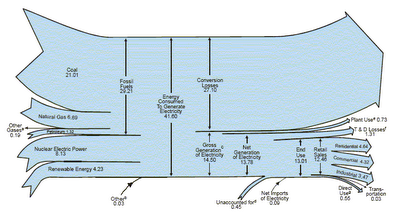Carbon sequestration is a way to reduce greenhouse gas emissions. It complements two other major approaches for greenhouse gas reduction, namely improving energy efficiency and increasing use of non-carbon energy sources. Interest has been increasing in the carbon sequestration option because it is very compatible with the large energy production and delivery infrastructure now in place. All three approaches will need to make significant contributions in order to meet the objective of the United Nations Framework Convention on Climate Change, that is the stabilization of greenhouse gas concentrations in the atmosphere at a level that would prevent dangerous anthropogenic interference with the climate system.
There are two primary types of carbon sequestration. Our program focuses on carbon dioxide capture and storage, where carbon dioxide is captured at its source (e.g., power plants, industrial processes) and subsequently stored in non-atmospheric reservoirs (e.g., depleted oil and gas reservoirs, unmineable coal seams, deep saline formations, deep ocean). - MIT Carbon Capture & Sequestration Technologies

One method of recovering more oil from mature fields is to inject CO2 into the formation. The highly pressurized gas forces the uptapped oil through openings in the rock to waiting extraction wells. - ExxonMobil's THE LAMP Magazine (PDF Link)
Theoretically, this could be a 'carbon-neutral' way to pump oil out of the ground depending on how much CO2 they need to pump down for each unit of oil they recover. You could say that this might even be a win-win scenario, but I bet that even Al Gore would never have expected this side benefit. Of course they still need to figure out to capture the CO2 first in an inexpensive way.
The benefits don't end here either. This Stanford University study, Global Climate & Energy Project (PDF Report Link) suggests that captured CO2 could be pumped underground to smother coal mine fires. You did know that fires in coal mines are a main emitter of carbon dioxide right?
See here for a map and summary of coal mine fires around the world.Coal-mine fires in China and India could be huge culprits in global warming. In China alone, up to 200 million tons of coal go up in flames each year—which may be equivalent to America’s total carbon-dioxide emissions from gasoline. India’s mine fires waste up to 10 million tons of coal annually. The pollution has made land in both countries uninhabitable. And the problem is expected to worsen.
Now experts are asking if controlling mine fires in Asia might be a key to reducing global warming. Economist Diana Furchtgott-Roth, for one, argues that it would likely be more efficient than offsets like planting trees or cleaning the ocean.
So, what can be done? One possible remedy being developed in the U.S. is a nitrogen-laced foam. - Parade Magazine
Of course, putting out the fires also has the significant side-effect of reducing CO2 emissions and as expensive as it might be, it might be cheaper than capturing CO2:
Although extinguishing these fires would be costly, it would reduce carbon emissions without the major disruptions to individual national economies mentioned above. And it would further benefit nations by eliminating the loss of their coal fields. As such, it might be possible to work out some international cost-sharing arrangement to attack those fires now, without waiting for all nations to agree on a wide-ranging treaty to limit carbon dioxide emissions. - Freakonomics Blog
Sounds great. Much more so than buying carbon credits. Take the US House of Representatives. They recently spend almost $90,000 of your money on what were very likely worthless carbon credits. I am not saying that we need to capture carbon. While I agree that the earth is getting warmer, I have yet to accept that we are the cause. However, if we are going to do this, lets do it right. The issues above are two good examples of what can be done. I say, lets start with the fires.
Previous:
You have probably seen this graphic in the sidebar but never clicked on it. Well, the title of the post is "Being More Green by Being More Efficient! (Electricity Flow, 2005)" a somewhat straightforward look at reducing CO2 emissions, without having to suffer in the process.

Conservation Basics for Global Warming Carbon Rookies - 23 March 07
No comments:
Post a Comment